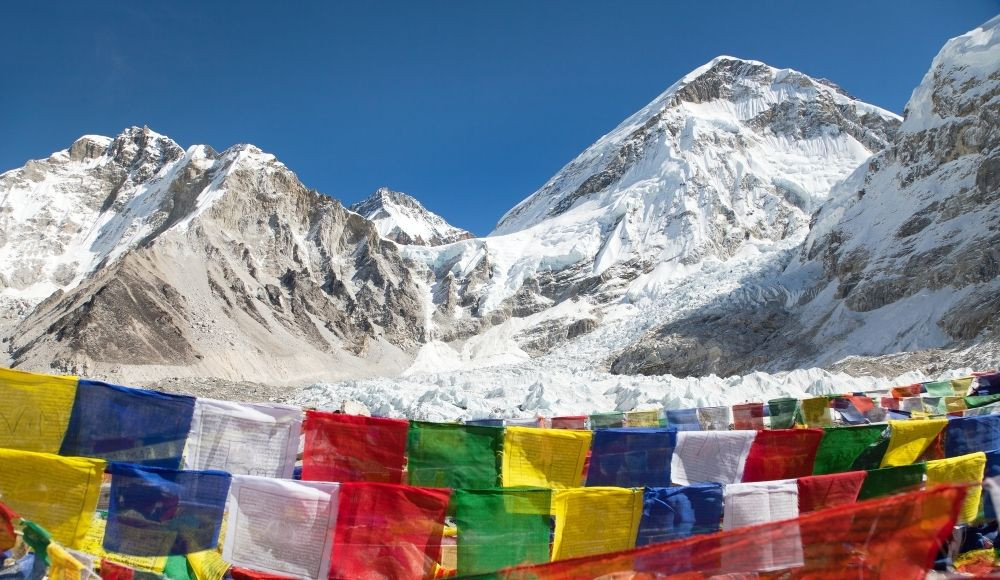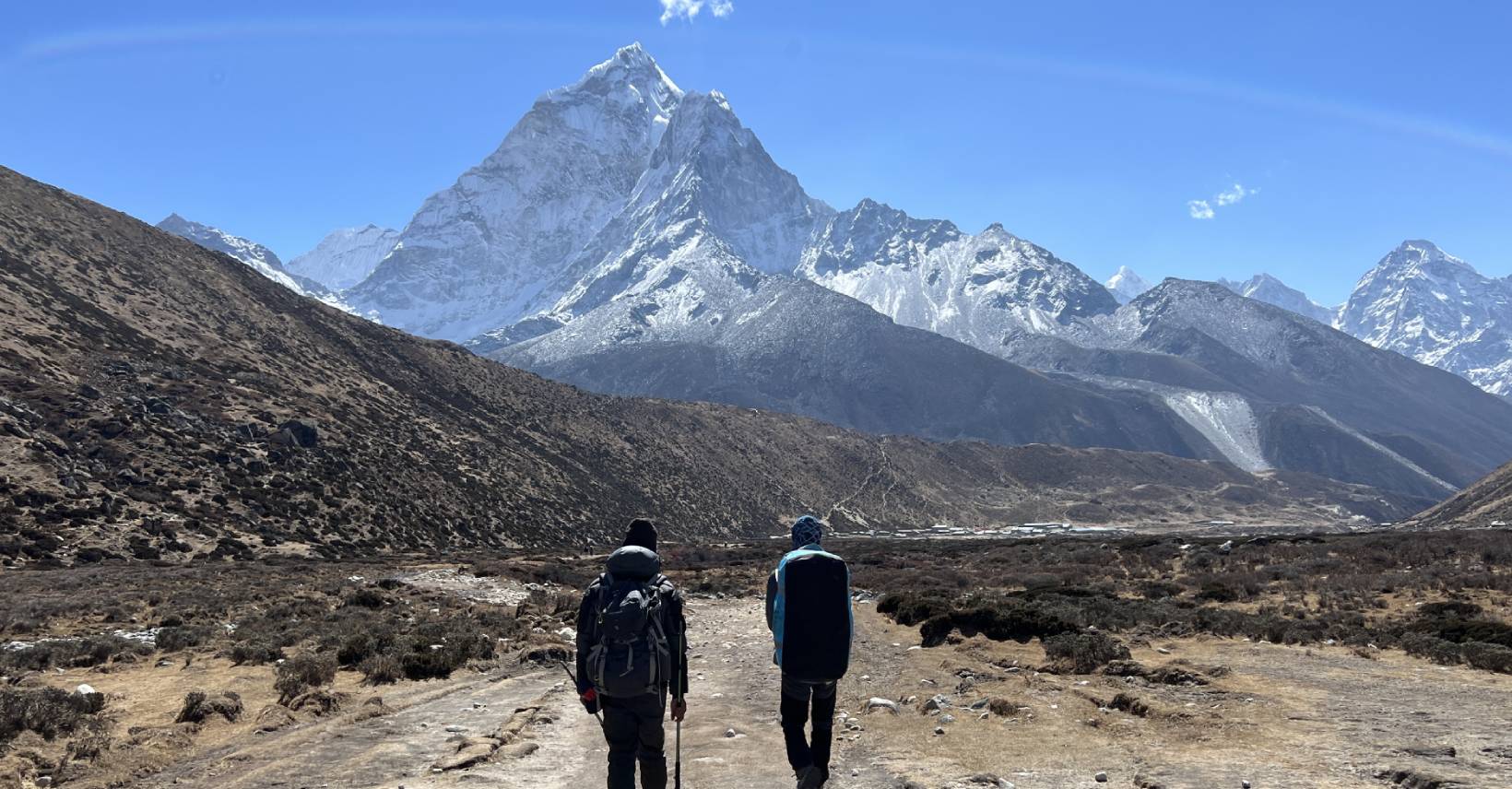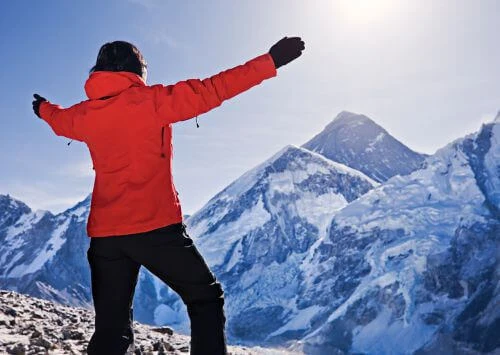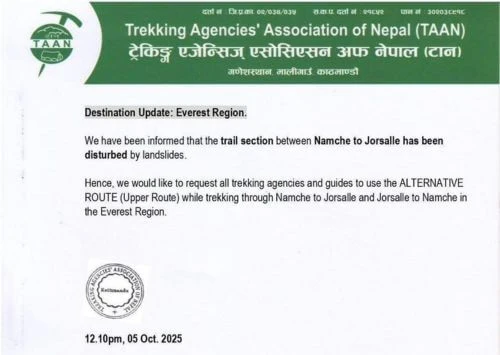Guidelines for Everest Base Camp Trek.
Have you ever wondered about the sudden rush of joy making your way through up and down the Himalayan terrains in Nepal? Then surely you would have thought about trekking in Nepal at least once, specifically in the Everest Region of Nepal. As we all know, Mt. Everest is the highest mountain in the world with a measured elevation of 8,848 meters above sea level which lies in the eastern part of Nepal. So, it doesn’t come as a shocker that you would want to go for trekking in the Everest Region, just to get up and close with the majestic Himalayan stature of Mt. Everest which in some sense can be a great achievement for many people around the world.
Having said that, I will comply the facts that Nepal as a country is a very diverse nation with nonetheless exquisite traveling destinations all around. But with that comes remoteness, undeveloped routes with modern facilities of communication and transportation, which in general terms pose as a rick for the advent travelers like you. So here, I am about to discuss of some of the major Guidelines to help you on your trek to the Everest Base Camp.
Take a glance below to know more about the following guidelines:

En-route villages and destinations.
| Lukla (2,860m) | Phakding (2,610m) |
| Namche Bazaar (3,440m) | Tengboche (3,867m) |
| Dingboche (4,410m) | Lobuche (4,940m) |
| Gorakshep (5,164m) | Pheriche (4,371m) |
Key notes about the Base Camp.
Look, the main reason you would want to visit the Everest Region is due to the fact that Mt. Everest lies there so it is a straightforward thing that you would want to trek to the base camp of Mt. Everest, if you’re not planning to summit the mountain. Situated at an elevation of 5,380 meters above sea level, trekkers need to hike up a lot of distance to get to the base camp. The base camp in general doesn’t allow you to see the peak of Mt. Everest itself but it sure is a place to wander upon. Once you reach the base camp, you can see the Himalayan glaciers and rocky terrains forming up as the climbers/summiteers prepare for their expedition to summit Mt. Everest. Also, the base camp lies in the south part of Mt. Everest and is a place where you can get spectacular visions of natural extravagance like none other in the entire world.
Best season for this trek.
If you want to make the most out of your trek to the glorious base camp of Mt. Everest then you certainly have to understand that choosing the right time of the year is a very vital decision. So, largely trekkers all over the world prefer the seasonal months of September to November and March to May as the best time of the entire year to go for Everest Base Camp Trek.
As a matter of fact, during these particular months the weather is perfect to view the glorious Himalayan mountain ranges without large hindrances. The trails up through the scenic villages get more picturesque as the rhododendron forest bloom during the spring seasons, which can make your trekking route a much pleasing one. If you want to walk on a trail with rhododendrons blossoming all around you then you should visit this region during spring season. Not only that during these specific months, the skies are mostly crystal clear with a wide open panoramic vista of the gleaming snow-capped mountains and additionally the wildlife thriving here get more verdant as you approach these seasons. You can witness lush diversity of wild flora and fauna flourishing in their natural habitats so if you are like exploring certain type of wild plant or an animal then these seasons are the one for you.
Altitude Sickness.
Any trekker who wants to trek in a high elevated destination such as the Everest Base Camp, surely needs to learn about High Altitude Sickness. In general terms, High Altitude Sickness occurs mostly to a person who has rushed their way up to a highly-elevated region without prior acclimatization. Due to which body can’t cope or adjust with the surrounding environment at such high elevations where the quantity of Oxygen molecules in the atmosphere get decreased to a very high amount. For this reason, trekkers who have never stayed or visited high elevated places are always recommended to take their time and make a slow hike to the high-altitude destinations such as the Everest Base Camp.
Not only that but, trekkers can ultimately have to cancel their trek due to large concern about their health.
How we can avoid altitude sickness?
The thing about trekking is that there is some chance of possibility that you as a trekker might experience Altitude Sickness during your trip in the high Himalayas. It’s not a shameful thing as majority of trekkers get Altitude Sickness so it’s a thing to keep in mind that you should avoid gaining Altitude Sickness anyhow if you want to complete your trek successfully. So, first of all, you need to remember that you should always stay overnight at a low altitude place and never attempt to march faster in your trekking trails. You should take it slow and let your body get accustomed to the surrounding environment. Another thing is that you should buy some drugs sugested by doctor which is a medicinal pill which can help you feel better at such altitudes. Additionally, you are requested not to drink strong alcohols or smoke harmful cigarettes as it can increase your chances of getting sick.
Just a quick thought, if you feel you like getting sick on your way to Everest Base Camp, you might want to take Diamox from the Namche Bazaar. As taking drugs from Namche Bazaar can help prevent you getting sicker at higher altitudes on your way to the base camp.
Meals.
 It’s a commonly asked question that how is the food in the Everest Region? Well to start, let me tell you that you don’t need to worry too much about the meals and food in your trek to the Everest Base Camp. Due to the fact that, it is a popular trekking region many of the tea houses which are situated along the trek routes, provide a wide range of food menus to choose from. You can have your meals set up like bread-butter-jam, pancakes, sprouted beans and many more, but you should know that the food ingredients are carried up there by porters not vehicles so the cost automatically increases as you get higher and higher for the food you would like to eat. So if you ask me keep away from non-veg foods as they are highly expensive and may even be bad for your stomach due to the lack of refrigerators and freezers to keep them fresh.
It’s a commonly asked question that how is the food in the Everest Region? Well to start, let me tell you that you don’t need to worry too much about the meals and food in your trek to the Everest Base Camp. Due to the fact that, it is a popular trekking region many of the tea houses which are situated along the trek routes, provide a wide range of food menus to choose from. You can have your meals set up like bread-butter-jam, pancakes, sprouted beans and many more, but you should know that the food ingredients are carried up there by porters not vehicles so the cost automatically increases as you get higher and higher for the food you would like to eat. So if you ask me keep away from non-veg foods as they are highly expensive and may even be bad for your stomach due to the lack of refrigerators and freezers to keep them fresh.
Nonetheless, the most cheaply available meal will be “Dal Bhaat and Tarkari” and it also comes in a plentiful quantity to feel your entire stomach in one serving. Other than that, Momo’s are the next favorite thing on the menu accompanied by noodles and pastas. Do remember that you shouldn’t complain as you must eat properly with a balance amount of meals to keep you going for your arduous journey.
Accommodation.
We hope we don’t have to tell you that you should not expect much luxurious hotel rooms like in the Kathmandu valley when it comes to choosing a Tea house or a lodge to spend your night in the Himalayan Region of Nepal. Though they may not be a 5-star hotel like in the developed cities, they sure have the necessities needed to make your overnight stay a comfortable one. Having comfy beds with crisp pillows and blankets, you are bound to feel contented as your exhausted bodies seek a refuge to lay down during your trek. The rooms are quite simple with no over the top features but they do surely make a sweet heaven for tired trekkers marching their way to the base camp of Mt. Everest. Just like that, the toilets are generally of squatting models but in some places, you can find the modern toilets just like in your home nation.
Bottle water and treatment water.
Water is another major aspect of trekking in the Everest Region. Due to its remoteness, the area has not been particularly encroached by the pollution of modern development. Nevertheless, it will be easier for you to buy some bottled drinking waters as they are safe to drink from. But that doesn’t mean you should do that often as the bottles that you buy are not bio-degradable and so it can pollute the natural environment of the region. For that purpose, I suggest trekkers using purifiers and oxidants to filter you water so that it will be safe to consume. While buying bottled waters is common while trekking, I have to warn you that the price of each drinking bottle increases as you get higher and higher throughout your trek.
Can we get luxury accommodation during the trek? If yes where?
While luxury should not be a thing to be concerned while you trek in the Himalayas, it surely is worth to keep in mind for places where you can get them during your trek. Now as you might know by now, that the cost of every single during your trek to the Everest Base Camp significantly rises so just like that having a luxurious accommodation can charge you a lot simply due to the fact that every feature which they offer are manually arranged which increases the cost of the offered services. Also in general during your trek to the base camp of Mt. Everest, normally you can find luxurious accommodations till Namche Bazaar but after that it can get a bit harder for you to find any place worth spending your money to make your stay a luxurious one.
Best time for Photography.
As mentioned above, the best seasons for trek normally tend to be the best seasons for photography as well. If you are in love with nature and take deep pride in taking incredible pictures of your trip then a trek to Everest Base Camp can easily allow you some great shots to capture. Come and explore the Khumbu valley on the months of September to November and March to May, you shall see incredible harmony of natural and cultural diversity expanding towards you upon your visit there. The weather stays undisturbed with less clouds to dim the lights off the scenic valleys and landscapes. Trekkers can capture awe-inspiring mountain sceneries with a very high quality and make the best out of the weather conditions upon reaching the Everest Region. So, if you are planning to trek in the Everest region with an intent of capturing some beautiful images then as I have said Sep to Nov and March to May are the best time of the year for you to come and wander upon the trails of Everest Base Camp.
Initial preparations and physical fitness.
Usually trekkers don’t need to have an Olympian level physical fitness to join up on a trek to the base camp of Mt. Everest. Now, as you understand that this particular trek takes you high up on a trail so you should be prepared to walk up and down on a very changing Himalayan terrain. For that you must at least prepare your legs to an extent in which they can easily walk for 4-6 hours without much difficulty. To do that, you should start exercising 1 month before coming to Nepal. Carrying out cardio vascular activities during your initial preparations can be beneficial for preparing your body and can improve the chances of completing the trek without much physical input. But do avoid over-exercising as our aim is to only make you physical ready by improving your stamina to endure the upcoming journey.
Permits.
For an amateur trekker, they might not know that trekking in Nepal is a very highly monitored activity so government of Nepal has imposed rules which require trekkers to gain a TIM’s Permit before actually trekking inside the Everest Region. There are going to be various security check points where trekkers are required to show/check in their TIM’s card in order to gain access inside the trekking region such as Everest Region. You may visit their official site of https://ntb.gov.np/en/plan-your-trip/before-you-come/tims-card to learn more about their process and importance for trekking in Nepal.
Guide and Porter.
Nearly every trekker who plans on trekking in Nepal is bound to be assisted by a guide and porter. This is mainly due to the overwhelming concern about the safety and convenience of the trekkers during their ordeal. A guide is experienced personnel who has trekked in a certain region for a long period of time and will assist you so that no problems or delays occur between your schedules. Other than that, guides are a necessary to keep you safe and away from dangerous situations/places which you can get into as Nepal has many trails where there is no means of getting emergency services. So, in those situations having a guide can make a big difference as they can request a call for “Emergency Helicopter Evacuations” to take you to hospital or some other place. Just like that porters are the persons who carry your luggage for you so that you don’t have to wonder around carrying huge loads of things which can hamper overall performance of your trek

Budget and Money.
Depending on your plans of longer or a shorter trek, you need to plan your budget and have cash accordingly for your trek to the Everest Base Camp. As there are no ATM’s in the trekking trail you might want to plan a fix sum of money to take you with you as a means of buying things where your ATM cards won’t work. Also, keeping extra money can come in handy if you get yourself stuck in a weird situation or you want some little extra service during your trek. So, if you plan on trekking in the Everest region, do make a budget you want to stay under and also have some cash with you while on your trek.
Travel Insurance.
Last but not the least, you should purchase a proper Travel Insurance before flying off to Nepal. This is because there is a chance that something bad might happen to you during your trek where you might have to spend a lot of money. So, in those cases having a properly issued travel Insurance can be of huge advantage for the trekkers. First of all, you should learn that before buying your Travel Insurance, you need to confirm that the Insurance will cover high altitude trekking/travel and include a Helicopter Emergency Evacuation if necessary. If these things won’t be covered then don’t purchase them as they will be of no use to you for your trek.
Life is all about adventures and exciting moments so why not create some never forgetting experiences by going for an Everest Base Camp trek.
Explore Nepal Trekking Planner's Everest Base Camp Trekking Packages:
Everest Base Camp Trekking: 15 Days
Everest Luxury Lodge Trekking-14 Days





